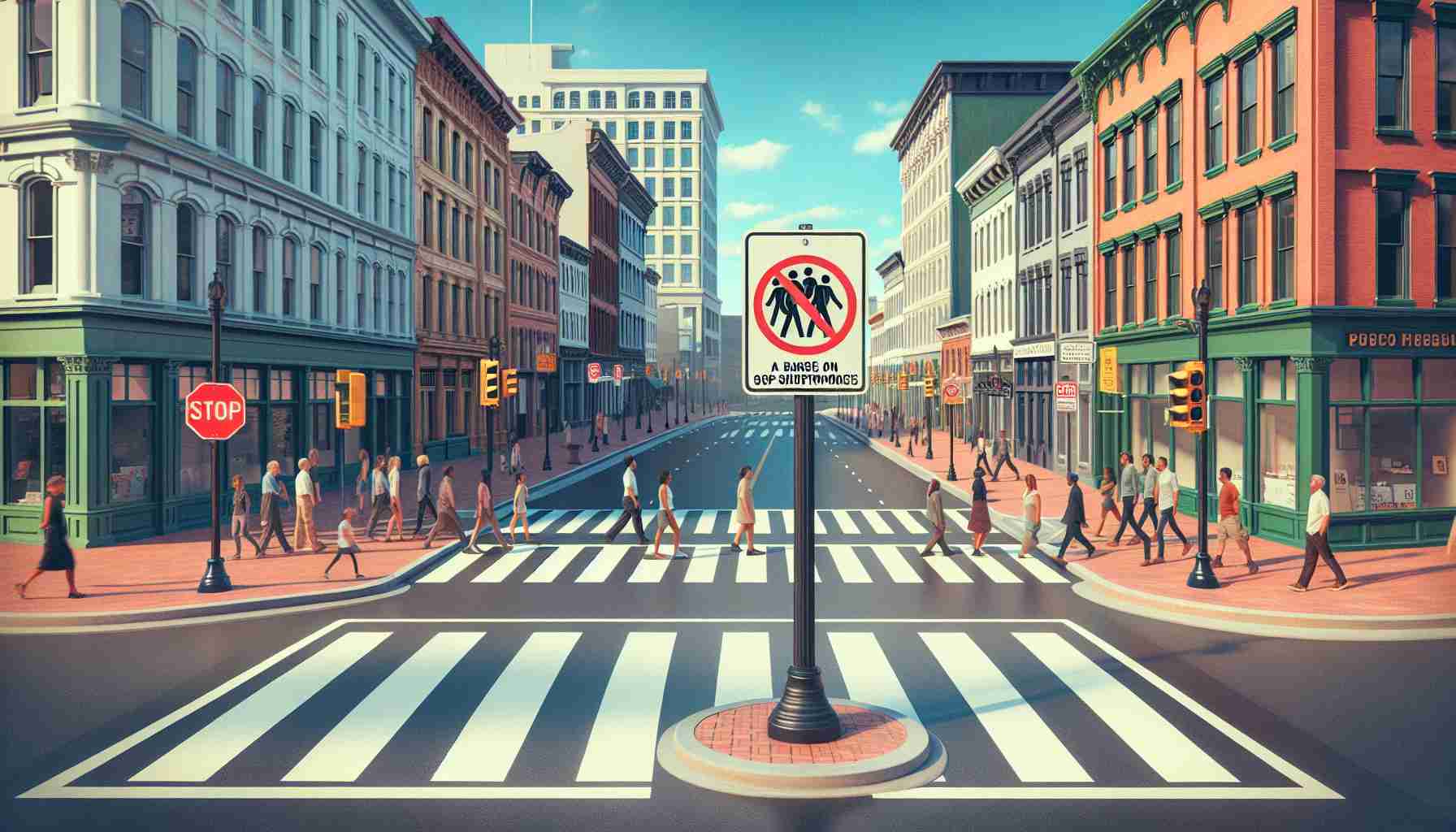Cheongju Takes Action Against Distracted Walking
In a recent move to improve pedestrian safety, Cheongju has placed warning signs on the ground of 80 crosswalks across numerous busy intersections. These cautionary markers aim to limit the use of smartphones when crossing the street. The initiative reflects an ongoing battle against growing traffic accidents resulting from pedestrians being distracted by smart devices.
The city’s decision is supported by a study on traffic culture status, which showed that adherence to non-use of smart devices among pedestrians in Cheongju decreased from 2022 to 2023. Findings from the Korea Transportation Safety Authority suggest that using a smartphone while walking impairs auditory distance perception by up to 50% and reduces the field of vision by 56%, significantly increasing the risk of traffic accidents.
City officials have voiced their commitment to nurturing a culture of traffic safety. They recognized increasing citizen awareness and improvements in traffic culture but stressed the need to effectively communicate and instill better habits concerning the use of smartphones by pedestrians.
In conjunction with these new floor markings, Cheongju has already engaged in active campaigning. An event, which took place late last month, targeted both drivers and pedestrians in an effort to spread awareness about the dangers of smartphone usage on the roads during commute hours. These combined efforts signify the city’s proactive stance on fostering a mature traffic culture that prioritizes pedestrian security.
Key Questions and Answers:
1. What prompted Cheongju to introduce smartphone ban markings at crosswalks?
The introduction of smartphone ban markings was prompted by the increasing number of traffic accidents caused by distracted walking due to smartphone use. A study showing a decrease in adherence to not using smart devices among pedestrians also influenced this decision.
2. How do smartphones affect pedestrian safety?
Smartphone usage while walking impairs auditory distance perception by up to 50% and reduces the visual field by 56%, leading to a significant increase in the risk of being involved in traffic accidents.
3. What other measures has Cheongju taken to improve traffic culture and pedestrian safety?
Besides the pavement markings, Cheongju has engaged in active campaigning, including events targeting both drivers and pedestrians, to raise awareness about the dangers of smartphone use while walking or driving.
Key Challenges or Controversies:
One challenge might be ensuring that these markings are effective in deterring smartphone use by pedestrians at crosswalks. The success of such a program relies on pedestrians’ willingness to comply and the city’s ability to maintain the visibility and understanding of these markings. Furthermore, enforcement might be an issue, as it could be difficult to penalize pedestrians without strict laws or regulations in place.
Advantages and Disadvantages:
Advantages:
– Might lead to a reduction in pedestrian-involved traffic accidents.
– Increases public awareness about the dangers of distracted walking.
– Encourages a culture of traffic safety within the community.
Disadvantages:
– May require continuous maintenance and update of the markings to ensure they remain visible and effective.
– Effectiveness depends on pedestrian compliance, which is not guaranteed.
– Limited in scope, as it only targets specific crosswalks and may not influence pedestrian behavior elsewhere.
Additional Facts Relevant to the Topic:
– Similar initiatives have been implemented in other parts of the world, such as ‘texting lanes’ in China and Belgium, reflecting a global concern over the impact of smartphones on pedestrian safety.
– The integration of technology, such as pedestrian warning systems and automatic braking in vehicles, is being designed to address these concerns, albeit from different angles.
For more information on traffic safety and preventive measures in different countries, you can refer to international traffic safety organizations or local municipal sites through trusted links like:
– World Health Organization (Traffic Safety)
– National Highway Traffic Safety Administration
